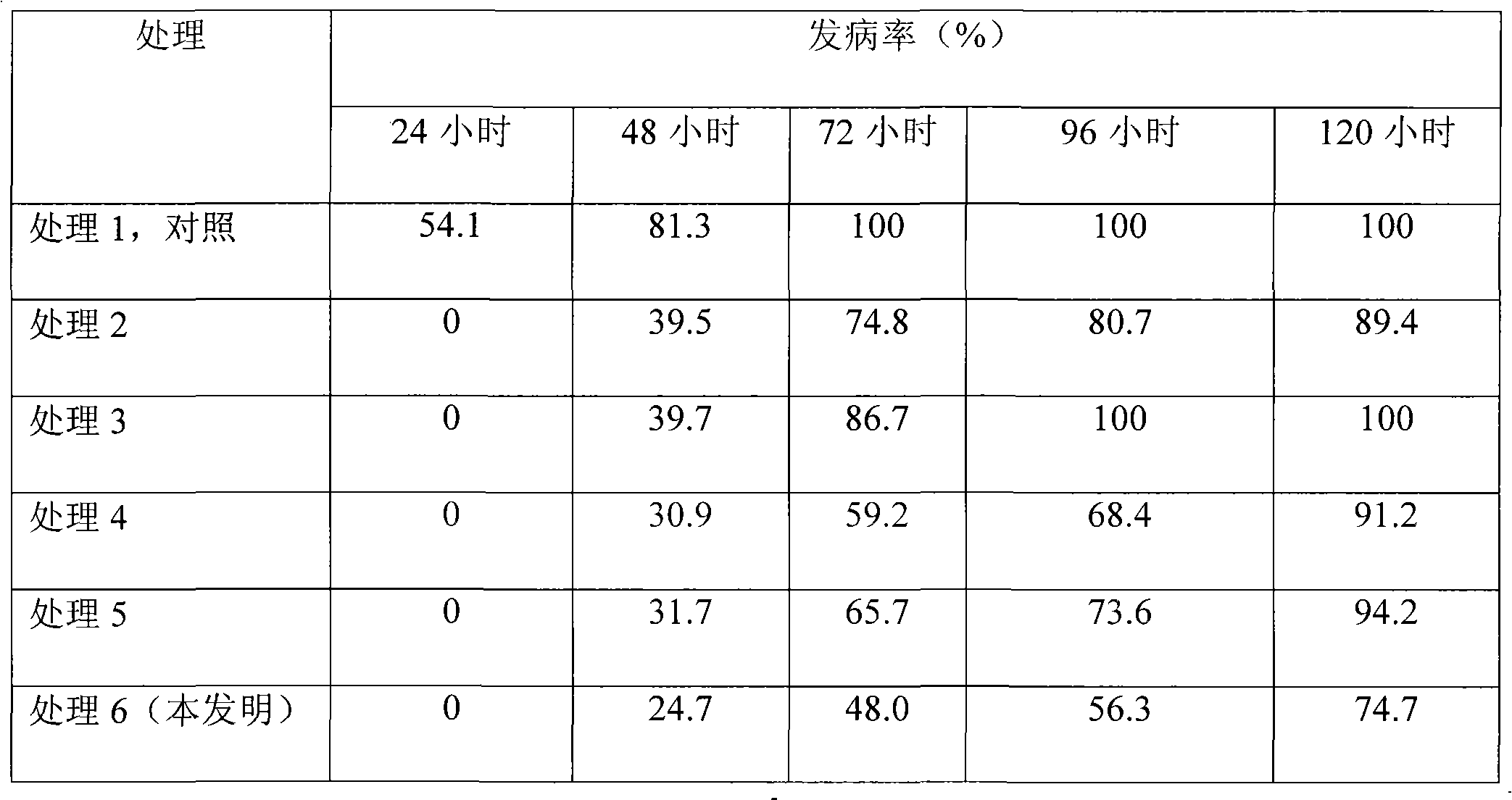Peach fruit disease biological antiseptic preservative and application and used cryptococcus laurentii
A technology of Cryptococcus lorensis and antistaling agent, applied in the field of peach fruit biological antiseptic preservation, can solve the problems of reducing the incidence of peach fruit diseases, not showing the control effect of peach fruit diseases, etc., and achieve the goal of increasing farmers' income and sustainable economic society The effect of development, disease control and cost reduction is outstanding
- Summary
- Abstract
- Description
- Claims
- Application Information
AI Technical Summary
Problems solved by technology
Method used
Image
Examples
Embodiment 1
[0036] Embodiment 1, the control of biological antiseptic preservative to peach blue mold
[0037] 1 Processing method:
[0038] 1.1 Biological preservative preparation:
[0039] The NYDA medium used below is: beef extract 8g, yeast powder 5g, glucose 10g, agar 20g, water to 1000ml, high pressure (121 ℃, 30 minutes) sterilization. The NYDB seed culture medium used is: 8 g of beef extract, 5 g of yeast powder, 10 g of glucose, dilute to 1000 ml of water, and sterilize under high pressure (121° C., 30 minutes).
[0040] Cryptococcus laurentis CGMCC NO.3590 was stored in NYDA medium at low temperature (4°C). The training program is as follows:
[0041] ①. Activation: Cryptococcus lorenti CGMCC NO.3590 was first cultured in NYDA medium at 28°C for 48 hours, and then subcultured twice (each time in NYDA medium at 28°C for 48 hours);
[0042] The activated yeast obtained by the above-mentioned repeated subcultivation for 2 times was connected to the NYDB seed medium with an inoc...
Embodiment 2
[0066] Embodiment 2, the control of biological antiseptic preservative to the soft rot of juicy peach:
[0067] The activation, cultivation and preparation of Cryptococcus laurentis were as described in Example 1. The preparation method of the biological antiseptic preservative is the same as in Example 1, that is, the final gained per L preservative contains 1 × 10 11 Lorenzo yeast cells, 1g chitosan and 10g calcium chloride.
[0068] Experiment 1. After the peach fruits are selected, cleaned and surface sterilized, wounds (30-50μl) of uniform size and depth are formed on the surface of each peach fruit with a sterilized puncher, and the amount of each wound is equal; The peach fruit is of high maturity (hardness is 5.3±0.4×10 5 Pa) peach fruit; respectively set as follows to process:
[0069] Treatment 1: blank control, add sterile water with the same wound volume to each fruit wound, and add 30 μl to each wound after 2 hours at a concentration of 1×10 4 spores / ml of R. ...
Embodiment 3
[0082] Embodiment 3, biological antiseptic preservative to the control effect of nectarine penicillium:
[0083] Replace the juicy peaches in Example 1 with nectarines, and the others are the same as in Example 1; the results are shown in Table 3.
[0084] Table 3. Control effect on nectarine penicillium
[0085] deal with
PUM
| Property | Measurement | Unit |
|---|---|---|
| Hardness | aaaaa | aaaaa |
| Hardness | aaaaa | aaaaa |
Abstract
Description
Claims
Application Information
 Login to View More
Login to View More - R&D
- Intellectual Property
- Life Sciences
- Materials
- Tech Scout
- Unparalleled Data Quality
- Higher Quality Content
- 60% Fewer Hallucinations
Browse by: Latest US Patents, China's latest patents, Technical Efficacy Thesaurus, Application Domain, Technology Topic, Popular Technical Reports.
© 2025 PatSnap. All rights reserved.Legal|Privacy policy|Modern Slavery Act Transparency Statement|Sitemap|About US| Contact US: help@patsnap.com



